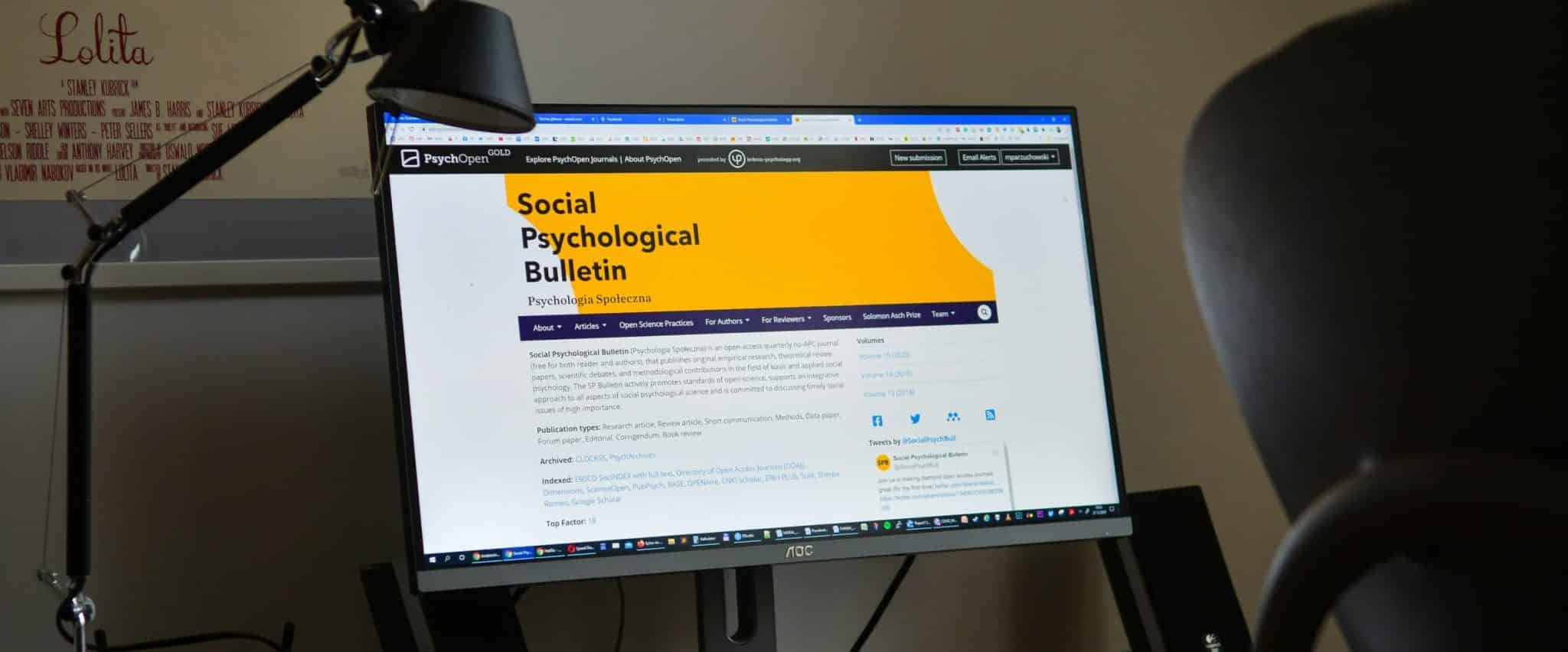How to Succeed in Mental Health App Development in 2025
The increasing prevalence of mental health challenges creates a demand for innovative solutions. This article bridges this gap by providing a comprehensive guide for developing a mental health app with an outline of the significant benefits such an application can offer. It delves into the essential steps of creating such a solution and provides actionable strategies for designing an effective application.
The blog discusses:
- importance of mental health app
- key features to develop
- development challenges with their solutions
- mental health application development phases
- how to ensure software effectiveness

Table of Contents
With the increasing awareness of mental health issues, the role of effective digital interventions is becoming increasingly vital. This demand is fulfilled by mental health application development – the complex process of designing, developing, testing, and deploying mobile or web applications to improve users’ mental health and well-being. This article offers relevant insights needed to build a reliable and impactful application that will improve patient care in the mental health landscape.
Table of Contents
Why It’s Important to Create a Mental Health App
To achieve maximum efficiency and support users facing psychological challenges, mental wellness applications must address several critical concerns, among which are:
- Awareness & Stigma Reduction:
Apps should offer educational resources and community support to eliminate stigma and promote proactive self-care in response to the increasing number of people interested in mental health. - Remote Medical Care Access:
As the reliance on telehealth grows more and more common, mental health apps must provide on-demand, remote access to counseling, self-help tools, and real-time interventions to provide access to medical services regardless of location. - Traditional Care Enhancement:
In many cases, traditional mental health services are shown to struggle with such problems as long wait times, high costs, and limited reach. In order to resolve these issues, digital applications must provide immediate support and complement existing care systems. - Customized, Research-Supported Interventions:
When managing mental health conditions like depression, anxiety, and stress, applications must provide personalized and data-backed interventions, powered by AI and data analytics. - Health Management System Interoperability:
Mental health apps must be devised to connect with electronic health records and various telehealth services so as to facilitate digital support and promote a seamless care experience. - Affordable, Expandable Solutions:
The growing need for mental health solutions demands applications that are scalable, cost-effective, without sacrificing quality, while also extending the reach of providers. - Crisis Management and Preventive Care Promotion:
To prevent severe episodes and ensure user safety, applications must incorporate vital features like mood tracking, real-time alerts, and access to emergency resources.
Essential Features of a Mental Health App
Developing a mental health app that is high-performing and robust requires careful consideration of its core functionalities. This section will look into the essential features that such a mental health application must incorporate to effectively support users and deliver impactful care, and the key considerations when developing a mental health app.
User-Friendly Interface
The interface of a mental health application must be optimized for both mobile and web platforms. When it comes to usability, ensure that navigation is clear and intuitive, so that all features are easily accessible for users with different levels of technological literacy. For optimal usability, consider incorporating rapid content display, and ensure compatibility with various accessibility standards to reach a broader audience.
Secure Teletherapy Tools
In order to ensure security of the sensitive interactions between users and mental health professionals, the application must be equipped with robust, real-time communication channels (e.g, video conferencing, secure messaging, and appointment scheduling systems) that are employed with end-to-end encryption and strong authentication protocols.
Emergency Contact Features
A mental health application must be implemented with features that account for emergencies, such as dedicated modules that allow users to quickly reach emergency services/pre-designated contacts during crises, and one-touch access to emergency calls. Ensure that the application can send automated alerts with the user’s location and notify trusted individuals such as family, friends, or mental health specialists. Ultimately, the app’s functionality must be highly secure, easily accessible, and guarantee immediate support for users when they most need it.
Data Security and Privacy
An efficient mental health application must ensure that users feel safe when sharing sensitive information and protect their data across all stages of user interaction. This high-level data protection can be achieved through comprehensive encryption methods, secure data storage, regular security audits, and implemented privacy protocols that comply with standards like HIPAA or COPPA.
Health System Integration
One of the most crucial features of an efficient mental health application is secure and seamless data exchange with external systems (e.g., Electronic Health Records (EHRs)), a capability achieved through secure APIs.This integration allows clinicians and digital platforms to share relevant mental health information, promotes coordinated care, and provides comprehensive insights into a user’s mental health status.
Monitoring and Tracking Tools
A well-designed mental health application enables users to log and track key indicators such as mood, sleep patterns, and daily activities. This mental health data can be visualized through interactive dashboards that allow users to identify trends and patterns over time. What users achieve with this feature in hindsight is better self-awareness and the ability to make data-based decisions about how to manage their mental health in the future.
Early Warning and Intervention
For continuous supervision of tracked data and identification of early signals of mental health decline, consider using insights from predictive analytics. In practice, when the system detects deviations from a user’s typical patterns, it triggers alerts or suggests proactive interventions. Essentially, this feature operates as a preventive mechanism that provides prompt support before mental health issues escalate.
Community Support Modules
A key aspect of user interaction is the ability to share their experiences, discuss challenges, and offer mutual support. To facilitate this, consider integrating your mental health application with secure, moderated community features like forums or group chat functionalities. As a community, these spaces encourage connection and reduce isolation; their functionality also adds significant value to the app’s other digital health tools.
Scalable Infrastructure
For a consistent and smooth experience, your mental health app must handle the increasing number of users while maintaining high service quality. To achieve that, consider building the backend on a cloud-based platform like AWS – this infrastructure will support a growing user base, as well as ensure high performance and reliability during peak usage periods.
Personalized Content Delivery
Tools like AI and machine learning platforms, such as AWS machine learning and Amazon Personalize, will greatly contribute to the functionality of the mental health application by creating personalized wellness recommendations based on user behavior and health data. Users will receive support content (e.g, guided meditation sessions, self-help modules) that are tailored to their individual needs and progress, which guarantees dynamic and relevant support aligned with their evolving preferences.
How does AWS Help Overcome Common Challenges in Developing a Mental Health App
Despite the unique challenges that arise in the process of developing a mental health app that is robust and reliable, cloud platforms like AWS offer powerful solutions to many common hurdles. Additionally, partnering with a trusted provider of healthcare software development services offers specialized expertise in navigating these complexities, as well as helps overcome and prevent them.
| Challenges | |
|---|---|
| Strict Data Protection and Regulatory Adherence for Sensitive Mental Health Data |
|
| Complex Management and Integration of Diverse, Multi-modal, and Siloed Mental Health Data with Integrity Requirements |
|
| Seamless Scalability and Reliability for High-Volume, Dynamic Usage with Zero Downtime |
|
| Personalization and Content Delivery Amidst Growing Content Libraries |
|
| Strategic Customization of Interventions for Diverse User Needs to Maximize Engagement and Effectiveness |
|
| User Safety and Anonymity as the Key to Overcoming Mental Health Stigma |
|
| Ensuring Clinical Effectiveness through Evidence-Based Practices |
|
| The Necessity of Responsible AI/ML Integration to Combat Bias and Foster Transparency |
|
| Ensuring AI Model Reproducibility, Tracking, and Monitoring for Reliable Performance Across its Lifecycle |
|
| User Trust and Engagement via a Secure, Transparent, and Intuitive Personal Data Environment |
|
| Seamless Integration of Technical Development and Clinical Expertise through Interdisciplinary Teamwork |
|
Steps in Developing a Mental Health App
Developing a mental health app that is useful and functional requires careful planning and execution across various stages. From initial concept to deployment and ongoing support, each step is critical in ensuring the app effectively meets user needs and delivers clinical value. This section outlines the essential phases involved in bringing a robust and supportive mental health application to life.
Understand User Needs and Define a Niche Focus
An optimal starting point would be to define specific mental health challenges or target demographics that your application will be managing. There are multiple examples of purpose-built apps, such as Sound Off, which focuses on veterans’ mental health, or Smiling Mind, an app that includes programs for all ages. A crucial part of the process is comprehensive research: you can leverage surveys, focus groups, and interviews in order to identify the unique struggles, preferences, and behaviors of your target audience. At this stage, the goal is to establish your mental health app’s unique value proposition.
Beyond these steps, you should focus on crucial technological considerations, which include:
- Mobile Mental Health Application Development
A successful app must provide seamless and intuitive user interactions across different devices and platforms, which also involves ensuring performance and accessibility to provide an intuitive experience for users, regardless of their technical skill level. - Cloud Platform and Big Data
To ensure functionality, select a scalable cloud infrastructure (e.g., AWS) capable of handling large volumes of data, and design robust data processing and analytics to inform user insights and enable personalized experiences. - Security and Privacy Concerns
Stringent security measures and encryption protocols are crucial when it comes to the protection of sensitive mental health data. Compliance with relevant regulations (e.g., HIPAA, COPPA, GDPR) also helps to attain users’ trust.
Focus on Usability and Accessibility
The application interface must be intuitive and simple to navigate for all users, including those experiencing distress. To guarantee that users can interact with your mental health app in different circumstances without any issues, consider leveraging a UI/UX framework – it will help you create engaging, user-friendly designs that foster a pleasing and simple experience. It works best if the app is accessible to users of all tech backgrounds and abilities, which can be guaranteed by adhering to accessibility standards like WCAG and incorporating multi-modal content (verbal, audio, visual). What demands special attention is user anonymity – your mental health application must offer features that ensure user privacy to overcome the stigma associated with mental health, as effectively demonstrated by Sound Off.
Incorporate Mental Health Data Privacy and Security from the Outset
Mental health data is highly sensitive and therefore demands strong data privacy and safety measures. To facilitate high-level security, verify your app’s compliance with relevant regulations by referencing AWS’s whitepapers and best practices. Some of the key aspects of security involve robust encryption methods for data at rest and in transit, strict access controls, and transparency with users regarding the collection, usage, and storage of their mental health data. In the end, the key to trustworthiness is building a system that respects user privacy from the very beginning.
Plan for Scalability and Reliability with Cloud Infrastructure
A scalable and reliable architecture capable of handling an increasing number of users is the groundwork for any successful application, and it could be built by leveraging cloud platforms, such as AWS. When handling infrastructure design, consider using services like Amazon EC2 and AWS Amplify – they will ensure flexible compute capacity and rapid product development. Finally, monitoring tools like Amazon CloudWatch will help you track performance, proactively address issues, and ensure high availability through multi-AZ deployments and robust backup strategies. Through these platforms, your mental health app will be able to maintain performance during peak usage, as well as optimize costs and operational efficiency.
Strategically Integrate AI/ML for Enhanced Features
Artificial intelligence and machine learning tools are a great way to equip your mental health app with personalized usability, actionable insights, and automated tasks. For example, Amazon Personalize is a platform that analyzes user behavior, delivers tailored recommendations, and uses A/B testing to improve your approach without requiring deep ML expertise. The functionality of your mental health application can be improved by various tools: generative AI models via Amazon Bedrock dynamically tailor content based on user behavior, and tools like Amazon SageMaker Clarify help identify and eliminate bias. At the same time, deploying advanced features should be in line with responsible AI practices, particularly maintaining human oversight, as seen with STIGMA’s review processes.
Establish Feedback Mechanisms and Iterate Continuously
A part of an efficient mental health application is constant supervision of engagement and usability, which can be achieved through the implementation of robust channels that gather user feedback through in-app surveys, feedback forms, and analytics. These feedback mechanisms help foster an agile, iterative creation process that will enable you to refine features based on relevant data and clinical insights. As a result, user feedback powers regular updates (as demonstrated by STIGMA’s “Narrate” beta) that guarantee the evolution of your mental health application according to users’ changing needs with maximum impact on their mental well-being.
Building Trust and Reducing Stigma
A mental health application should be an environment that values trust and support. Ways to do so are leveraging features that both protect user privacy and encourage communication. Such an environment can be achieved through moderated community spaces and peer support channels, which will allow users to share their experiences without fear of judgment. These communication-based and robust anonymity features enable your mental health application to fulfill one of its main purposes – to reduce the stigma around mental health and encourage broader adoption.
Navigate the Regulatory Landscape and Compliance
Various regulatory and compliance requirements (e.g, data privacy laws, medical device regulations (if applicable), accessibility standards) need to be relevant to your target market. To manage this process with maximum efficiency, consider turning to legal and compliance experts early on to verify that your mental health application meets all requirements. Additional security measures involve using AWS compliance resources to be constantly prepared for safety threats and evolving regulatory obligations, implementing regular audits, and maintaining detailed documentation of your processes and data handling practices.
Integration with Health Management Systems
Another vital aspect of developing a mental health app is the connection with health management systems. By leveraging robust APIs, you will enable seamless data exchange between your mental health app and existing clinical systems (e.g, EHRs). Integration with the clinical systems also requires the adoption of industry standards, such as HL7 or FHIR, to allow interoperability and improve data sharing. In practice, this integration will improve patient care outcomes and the general utility of the app, as it ensures that real-time patient data is effectively incorporated into clinical workflows.
To maximize the efficiency of the application and minimize maintenance overhead, verify that patient data is structured and transmitted in a standardized format. What you achieve by implementing this approach is constant support of regulatory compliance and the groundwork for scalable, secure, and reliable data exchange across the healthcare ecosystem.
Evaluating Impact and Outcomes
Lastly, your mental health application has to identify and track key performance indicators (e.g, user engagement, symptom improvement, clinical outcomes) to measure the app’s effectiveness. Consider using analytics platforms like Amazon QuickSight and SageMaker to assess intervention impacts and deliver personalized data-based feedback. To ensure the app’s proven clinical effectiveness and lasting impact, it is important to engage with clinical experts to conduct pilot studies and gather rigorous validation data regarding the efficiency of the application.
Such information as outcome data and user feedback must be regularly reviewed as a basis for iterative improvements of features and interventions. In hindsight, these assessments will help you significantly improve the performance of your mental health application and ensure that users achieve sustained, observable positive changes in their mental well-being.
How to Ensure the Effectiveness of a Mental Health App
The efficiency of a mental health application depends on several clear, interrelated components, particularly:
- Evidence-Based Intervention
To successfully create a mental health app, one should ensure that the content and features it offers are based on established psychological theories and practices. A great example is an app Smiling Mind – developed by psychologists and educators, which shows that mental health programs built on clinical research lead to more dependable results. What these evidence-based practices achieve is the enhanced credibility of your mental health app, as well as verified, applicable strategies that can improve users’ well-being. - Targeted Mental Health Goals
When choosing the niche for your app, focus on specific areas for improvement, rather than addressing broad issues, so that your app can provide more precise and effective interventions. Those aspects might be sleep improvement, stress management, meditation, or community connection to directly address users’ needs. Prime examples are how Calm targets sleep and relaxation, or how STIGMA connects users with shared experiences. The goal is to clearly define the purpose of your application to develop specialized features and content, foster higher engagement, and produce better mental health outcomes. - Leveraging Technology for Personalization
Given how important customization is for user interaction, it is highly recommended to integrate advanced technologies such as machine learning and artificial intelligence. For instance, tools like Amazon Personalize analyze individual behavior and preferences and deliver interventions tailored to each user’s profile. Following that, AI-driven insights help track patterns over time (e.g, changes in sleep, mood) and allow the app to promptly adjust interventions and ensure continuous relevance and efficiency of the recommendations. - User Engagement and Safe Experience
Gamified elements, intuitive interfaces, and multi-modal content (text, audio, video) tailored to different learning styles – these interactive elements are the key to engaged, sustained use and meaningful outcomes. Another important aspect of safe user interactions is privacy. Attained by features such as anonymity or strict COPPA-compliant practices, this secure environment helps reduce mental health stigma and encourages users to engage openly with the app’s resources. - Scalable Infrastructure and Continuous Improvement
A scalable and reliable cloud platform (e.g., AWS) is the foundation required for the app to handle increasing user demand without performance issues. Such an infrastructure supports rapid deployment of updates and new features, necessities that will occur considering how user needs evolve. It is also important to establish feedback channels, as well as regularly analyze user data to continuously iterate and refine the application, which will result in improved clinical outcomes and long-term user satisfaction.
Why Choose Romexsoft for Your Mental Health Application Development
What makes Romexsoft proficient in digital mental health solutions is the extensive experience in healthcare solutions development that enables the delivery of custom solutions tailored to the unique mental health challenges. Our mental health apps provide mobile access to mental health management tools, ensure the scalable, robust, and seamless integration of the app with healthcare systems and EHRs, and guarantee compliance with standards like HIPAA and GDPR.
Our toolkit also includes advanced technologies such as AI, machine learning, and native mobile development (via Swift and Kotlin) to produce personalized, data-driven interventions. By leveraging flexible collaboration models and adhering to a structured process that covers all stages of mental health application development, from discovery and UI/UX design to ongoing maintenance, we provide the expertise to help you turn your idea of a mental health app into an effective digital solution.
Mental Health Software Development FAQ
The final cost of developing a mental health app varies depending on several factors, such as project scope, required features, regulatory compliance, and the chosen technology stack. If you are considering a relatively small-scale mental health application that provides basic mood tracking, appointment scheduling, or self-help resources, the typical budget for development falls within a $50,000 to $150,000 range.
Mid-scale projects that include features like teletherapy, secure messaging, and personalized content based on evidence-based interventions usually involve a budget ranging from $150,000 to $500,000. Finally, the cost of larger-scale applications, ones that include complex platforms that integrate with medical systems, employ AI-driven diagnostics, or offer comprehensive virtual communities, can exceed $500,000.
To objectively estimate the success of a mental health app, one is expected to monitor such indicators as user engagement, retention rates, positive changes in users’ mental health through surveys or clinical assessments, and gather feedback and reviews to assess satisfaction levels. For a more comprehensive view of the app’s overall impact and effectiveness, you can evaluate the achievement of set objectives, KPIs, as well as secure partnerships and endorsements from reputable health organizations.
Generally, it takes approximately 4-6 months to develop an average mental health tracker app with a dedicated team. This process involves multiple stages: planning, design, development, testing (including security testing), and deployment. That said, the time required for building an application may vary based on the complexity of its features, integration needs, and regulatory compliance requirements. On top of that, iterative improvements after launch will also extend the overall process.
If a mental fitness app collects, stores, or transmits protected health information (PHI), then yes, it does need to be HIPAA compliant. Adhering to HIPAA standards is also required if the app is designed to be used by covered entities or their business associates (healthcare professionals, insurance companies, etc.), or if it handles sensitive personal data that could identify a patient. On the other hand, strict HIPAA compliance might not be necessary if the application only offers general wellness advice without collecting PHI, although implementing robust privacy and security practices is still recommended.





